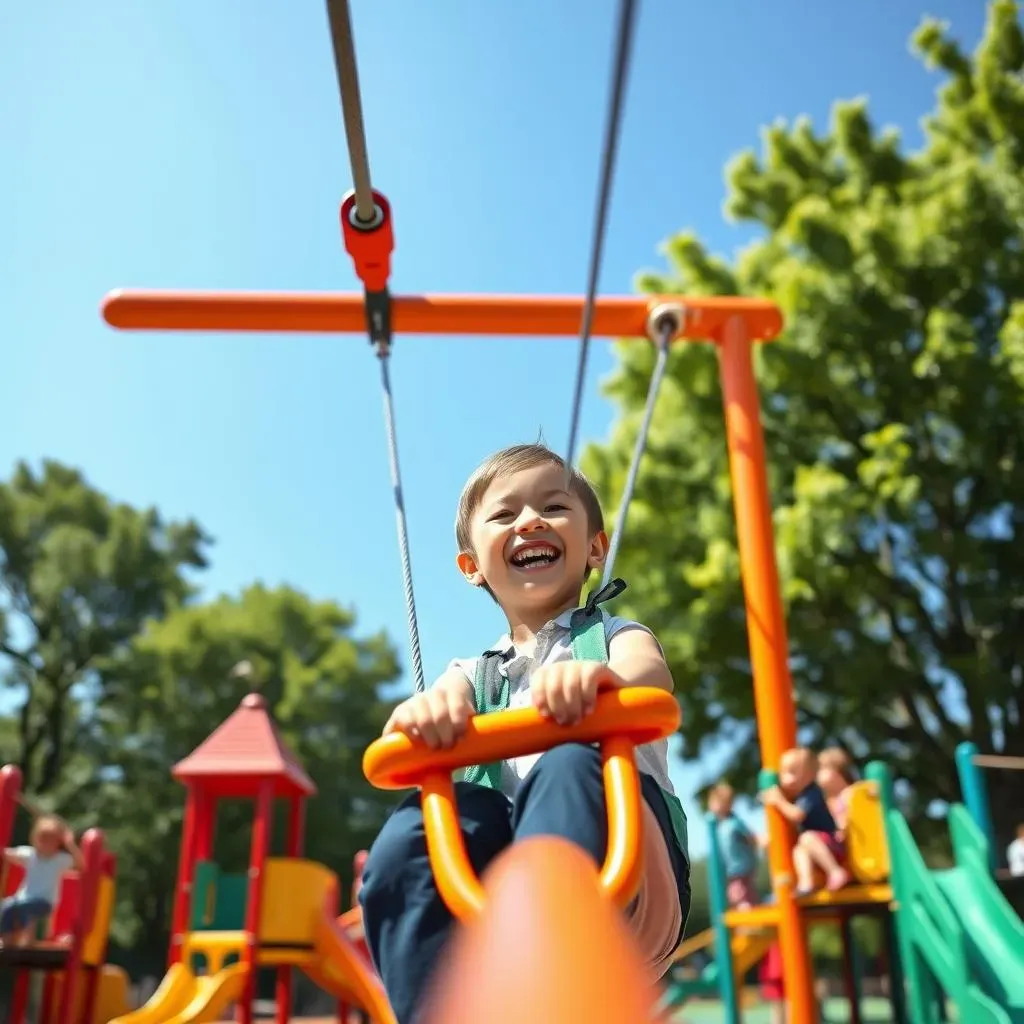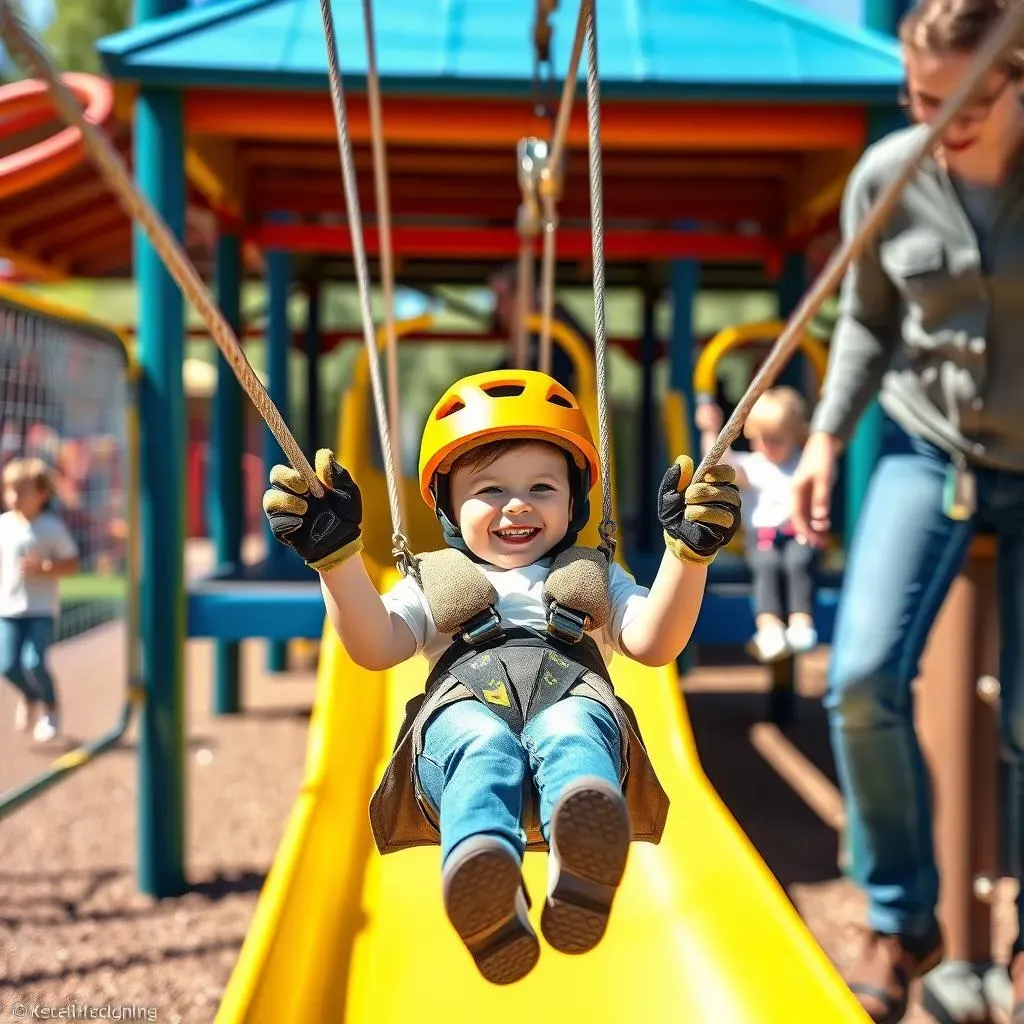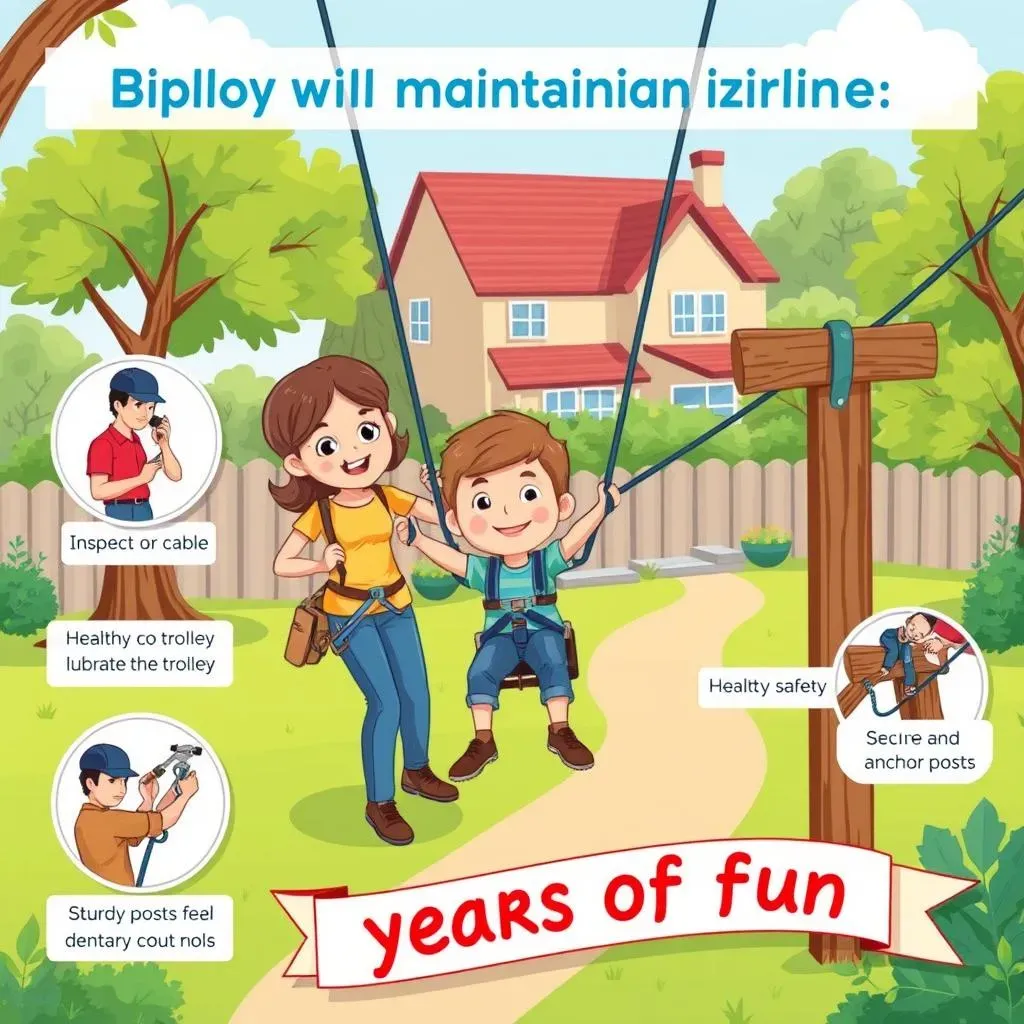Table of Contents
Want to inject some serious thrill into your local park or backyard? A playground equipment zipline might just be the answer. It's not just about the adrenaline rush; it's about building confidence, encouraging outdoor play, and creating unforgettable memories. But before you rush out to buy the first zipline kit you see, there's a bit to consider. This guide breaks down everything you need to know, from choosing the right equipment and ensuring top-notch safety, to mastering the installation process and keeping your zipline in tip-top shape for years of soaring fun. We'll explore the different types of ziplines available, discuss weight limits and age appropriateness, and even share some pro tips on making your zipline the safest and most exciting feature in the neighborhood. So, buckle up, because we're about to take a ride through the world of playground equipment ziplines!
Why a Playground Equipment Zipline is the Perfect Addition

Why a Playground Equipment Zipline is the Perfect Addition
let's talk ziplines! Seriously, why is a playground equipment zipline the perfect addition? Think about it – playgrounds are awesome, but they can sometimes feel a bit… predictable. Swings, slides, maybe a climbing frame. But a zipline? That's next-level excitement. It's the kind of feature that makes kids' eyes light up and instantly transforms a regular playground into an adventure zone. It's not just about fun, it's also about developing coordination, building strength, and encouraging kids to step outside their comfort zones. Plus, let's be honest, adults secretly want to try it too!
A zipline isn't just another piece of equipment; it's an experience. It teaches kids about physics in a hands-on way – gravity, momentum, speed. They're learning without even realizing it! And in a world increasingly dominated by screens, anything that gets kids excited about being outdoors and active is a huge win. Imagine the laughter, the cheers, the sense of accomplishment as they zip from one end to the other. A zipline creates memories that last a lifetime.
Beyond the sheer fun factor, a zipline offers unique developmental benefits. It helps improve gross motor skills, balance, and spatial awareness. As kids grip the handle and navigate the ride, they're strengthening their arms, core, and legs. It also encourages problem-solving – figuring out how to maintain their balance, how to control their speed, how to land safely. These are valuable skills that translate to other areas of their lives.
- Enhances gross motor skills
- Improves balance and coordination
- Promotes outdoor activity
- Boosts confidence and self-esteem
- Creates a unique and exciting play experience
Choosing the Right Playground Zipline Equipment for Your Space

Choosing the Right Playground Zipline Equipment for Your Space
so you're sold on the idea of a zipline, awesome! Now comes the fun part: choosing the right playground zipline equipment for your space. This isn't a one-size-fits-all situation, so it's crucial to consider a few key factors. First up, think about the size and layout of your playground. How much space do you realistically have for a zipline run? Are there any obstacles like trees or buildings that you need to work around? Measure your space carefully and sketch out a rough plan before you even start looking at equipment. This will save you a ton of headaches later on.
Next, consider who will be using the zipline. Is it primarily for young children, older kids, or a mix of ages? Different zipline kits are designed for different weight limits and age ranges, so it's essential to choose one that's appropriate for your target audience. Also, think about the level of challenge you want to provide. A short, gentle zipline might be perfect for beginners, while a longer, faster ride will appeal to more adventurous kids (and adults!). Don't forget to factor in the surrounding environment. Is your playground located in a hot, sunny area? If so, you'll want to choose equipment that's made from durable, weather-resistant materials that can withstand the elements. And finally, think about your budget. Zipline kits can range in price from a few hundred dollars to several thousand, so it's important to set a realistic budget and stick to it.
When you're browsing different zipline kits, pay close attention to the quality of the components. Look for heavy-duty cables, sturdy trolleys, and comfortable seats or harnesses. Read reviews from other customers to get a sense of the product's durability and performance. And don't be afraid to ask questions! Contact the manufacturer or retailer if you have any concerns about the equipment's suitability for your space or your users.
Factor | Considerations |
|---|---|
Space | Measure available length, consider obstacles |
Users | Age range, weight limits, skill level |
Environment | Weather conditions, sun exposure |
Budget | Set a realistic spending limit |
Equipment Quality | Cable strength, trolley durability, seat comfort |
Playground Equipment Zipline Safety: A Comprehensive Guide

Playground Equipment Zipline Safety: A Comprehensive Guide
Alright, let's get serious for a minute, because when we're talking about kids flying through the air, playground equipment zipline safety is non-negotiable. It's not just about avoiding accidents; it's about creating an environment where kids can challenge themselves and have fun with confidence. So, where do we even start? First off, meticulous installation is KEY. Follow the manufacturer's instructions to the letter. Don't cut corners, don't improvise, and if you're not 100% confident in your abilities, hire a professional. Seriously, this is not the time to "wing it."
Once your zipline is installed, regular inspections are crucial. Check the cable for any signs of wear and tear, like fraying or rust. Make sure the trolley is moving smoothly and that the seat or harness is in good condition. Inspect the anchor points to ensure they're still secure. And don't forget to check the surrounding area for any potential hazards, like low-hanging branches or sharp objects. It's also vital to establish clear rules for zipline use. Weight limits should be strictly enforced, and kids should always be supervised by an adult. Teach them the proper way to grip the handle, how to brake safely, and what to do in case of an emergency. A little bit of education can go a long way in preventing accidents.
Protective gear is another essential component of zipline safety. Helmets are a must, and gloves can help improve grip and prevent hand injuries. Consider adding a padded landing area to cushion falls. And finally, remember that common sense is your best friend. If the weather is bad – high winds, heavy rain, lightning – shut down the zipline. It's always better to err on the side of caution. By taking these precautions, you can create a safe and enjoyable zipline experience for everyone.
- Regularly inspect equipment for wear and tear
- Enforce weight limits and age restrictions
- Provide adult supervision at all times
- Require helmets and gloves
- Establish clear rules and guidelines
Installation Tips for Your Playground Equipment Zipline

Installation Tips for Your Playground Equipment Zipline
Choosing the Perfect Spot
so you've got your zipline kit – awesome! Now, before you start tearing open boxes, let's talk location. This is super important because the right spot can make or break the whole zipline experience. You need two sturdy anchor points, like mature trees or robust posts, with enough distance between them to create a thrilling ride. But it's not just about distance; it's about elevation too. You'll want a gentle slope so gravity can do its thing, but not so steep that it becomes a runaway train. Think Goldilocks – not too high, not too low, just right! Also, scope out the landing area. Make sure it's clear of any obstacles and has a soft, forgiving surface like grass or wood chips. Trust me, your kids (and maybe you!) will thank you for it.
Before committing to a spot, double-check for any underground utilities like gas lines or buried cables. Call your local utility company to mark these locations – it's a free service and can prevent a major disaster. And while you're at it, consider the surrounding environment. Is there a clear line of sight from your house or a designated supervision area? You want to be able to keep an eye on the action without having to strain your neck or hike through the jungle. Finally, think about the long-term impact on the environment. Will the zipline interfere with tree growth or damage the surrounding vegetation? Choose a location that minimizes environmental impact and preserves the natural beauty of your playground.
Mastering the Mounting Process
Alright, you've found the perfect spot – time to get your hands dirty! The mounting process can vary depending on your zipline kit and your chosen anchor points, but there are a few general principles to keep in mind. First off, make sure you have all the necessary tools and hardware. This might include wrenches, sockets, cable clamps, turnbuckles, and a cable tensioner. Read the manufacturer's instructions carefully and familiarize yourself with each component. Before attaching anything to your anchor points, inspect them thoroughly for any signs of weakness or rot. If you're using trees, make sure they're healthy and have a diameter of at least 12 inches. If you're using posts, make sure they're securely anchored in the ground and can withstand the weight and tension of the zipline.
When attaching the cable to the anchor points, use appropriate hardware like cable clamps or U-bolts. Make sure the cable is properly seated in the hardware and that all connections are tightened securely. Use a cable tensioner to gradually tighten the cable until it reaches the recommended tension. This is crucial for ensuring a smooth and safe ride. As you tighten the cable, periodically check the anchor points for any signs of stress or movement. If anything looks unstable, stop immediately and reassess the situation. It's always better to be safe than sorry. And remember, if you're not comfortable with any aspect of the mounting process, don't hesitate to call in a professional. A properly installed zipline is a safe zipline.
Step | Description |
|---|---|
1 | Inspect anchor points for stability |
2 | Attach cable using appropriate hardware |
3 | Tension cable gradually to recommended level |
4 | Double-check all connections for tightness |
The Final Touches and Testing
You're almost there! The cable is up, the trolley is on, and the anticipation is building. But before you let anyone take a ride, there are a few final touches to take care of. First, install any safety features that came with your kit, like a braking system or a safety harness. Make sure these features are properly adjusted and functioning correctly. Next, do a thorough test run yourself (or with a trusted adult). Start with a slow, cautious ride and gradually increase the speed as you gain confidence. Pay attention to how the zipline feels – is it smooth and stable, or are there any bumps or vibrations? Check the landing area for any potential hazards and make sure it's adequately padded.
Once you're satisfied with the performance of the zipline, gather the kids and give them a safety briefing. Explain the rules of the ride, demonstrate the proper way to grip the handle and brake, and answer any questions they might have. Emphasize the importance of wearing helmets and following instructions. And finally, supervise their first few rides closely, providing encouragement and guidance as needed. With a little bit of preparation and attention to detail, you can transform your backyard into a thrilling zipline adventure that will provide years of fun and excitement.
Maintaining Your Playground Equipment Zipline for Years of Fun

Maintaining Your Playground Equipment Zipline for Years of Fun
Regular Inspections: Your First Line of Defense
so you've got your zipline up and running, kids are loving it, and you're feeling like a backyard superhero. But don't get complacent! Maintaining your playground equipment zipline for years of fun is all about consistent care. Think of it like a car – you wouldn't just drive it until it breaks down, right? You need regular maintenance to keep it running smoothly and safely. The same goes for your zipline. Start with regular visual inspections. I'm talking at least once a month, and even more frequently if it's getting heavy use. Look for any signs of wear and tear on the cable, trolley, seat, and anchor points. Are there any frayed strands on the cable? Is the trolley moving smoothly, or is it getting stuck? Is the seat or harness showing any signs of damage? Are the anchor points still secure? Catching these problems early can prevent a serious accident down the road.
Don't just rely on your eyes, though. Get your hands dirty! Physically inspect the cable for any kinks or bends. Wiggle the trolley to check for any looseness or play. Tug on the anchor points to make sure they're still firmly in place. And don't forget to lubricate the trolley regularly with a silicone-based lubricant. This will keep it moving smoothly and prevent it from seizing up. Also, pay attention to the surrounding environment. Are there any tree branches that are getting too close to the zipline? Are there any new obstacles that could pose a hazard? Trim back any vegetation and remove any potential hazards. A little bit of preventative maintenance can go a long way in extending the life of your zipline and keeping it safe for years to come.
Cable Care: The Lifeline of Your Zipline
The cable is the heart and soul of your zipline, so it's essential to give it some extra TLC. Over time, the cable can stretch, sag, and even corrode, especially if it's exposed to the elements. To prevent this, start by keeping the cable clean and free of debris. Use a wire brush to remove any dirt, rust, or bird droppings. Then, apply a rust inhibitor or cable lubricant to protect it from corrosion. Also, periodically check the cable tension. If it's sagging too much, use a cable tensioner to tighten it back up to the recommended level. But be careful not to over-tighten it, as this can put excessive stress on the anchor points.
If you notice any significant damage to the cable, like frayed strands or kinks, replace it immediately. Don't try to repair it yourself – it's just not worth the risk. When replacing the cable, use a high-quality cable that's specifically designed for ziplines. Make sure it meets or exceeds the weight capacity of your zipline kit. And finally, consider investing in a cable cover to protect it from the sun and rain. A cable cover can significantly extend the life of your cable and keep it looking its best.
Maintenance Task | Frequency | Description |
|---|---|---|
Visual Inspection | Monthly (or more) | Check for wear, damage, and loose connections |
Cable Cleaning | Every 3-6 months | Remove dirt, rust, and debris |
Cable Lubrication | Every 3-6 months | Apply rust inhibitor or cable lubricant |
Tension Adjustment | As needed | Tighten cable to recommended tension |
Hardware Check | Every 6-12 months | Inspect and tighten all bolts and clamps |
Hardware and Component Check-Ups
It's easy to focus on the cable, but don't forget about all the other components that make your zipline work! The trolley, seat, harness, and anchor points all need regular attention. Start by inspecting the trolley for any signs of wear or damage. Are the wheels spinning freely, or are they getting stuck? Are there any cracks or breaks in the housing? If the trolley is showing any signs of wear, replace it immediately. Next, check the seat or harness for any tears, rips, or fraying. Make sure the straps and buckles are in good condition and that they're properly adjusted. If the seat or harness is damaged, replace it immediately.
Finally, inspect the anchor points for any signs of weakness or rot. If you're using trees, make sure they're healthy and that the bark isn't peeling or cracking. If you're using posts, make sure they're securely anchored in the ground and that they're not leaning or tilting. If the anchor points are showing any signs of weakness, reinforce them or replace them entirely. Remember, the safety of your zipline depends on the strength and integrity of all its components.
Seasonal Storage: Protecting Your Investment
If you live in an area with harsh winters or extreme weather conditions, consider disassembling and storing your zipline during the off-season. This will protect it from the elements and extend its lifespan. Start by disconnecting the cable from the anchor points and carefully coiling it up. Store the cable in a dry, protected location, like a garage or shed. Remove the trolley, seat, and harness and clean them thoroughly. Inspect them for any damage and make any necessary repairs. Store these components in a separate container to protect them from dust and dirt.
If you're using trees as anchor points, consider wrapping them with burlap or tree wrap to protect them from the cold and snow. If you're using posts, cover them with a tarp to prevent them from rotting or deteriorating. And finally, before reassembling your zipline in the spring, give all the components a thorough inspection to make sure they're still in good condition. Replace any worn or damaged parts and lubricate all moving parts. By taking these precautions, you can ensure that your zipline is ready for another season of fun and excitement.
- Disassemble zipline during off-season
- Clean and inspect all components
- Store in a dry, protected location
- Protect anchor points from the elements
Conclusion: Taking Your Playground to New Heights with a Zipline
Adding a playground equipment zipline isn't just about adding a fun feature; it's about creating an experience. From the initial thrill of choosing the perfect setup to the countless hours of laughter and excitement it brings, a zipline can transform any outdoor space. Remember to prioritize safety above all else, meticulously follow installation guidelines, and commit to regular maintenance. With the right approach, your playground zipline will be a source of joy and adventure for years to come, making your space the ultimate destination for outdoor fun.